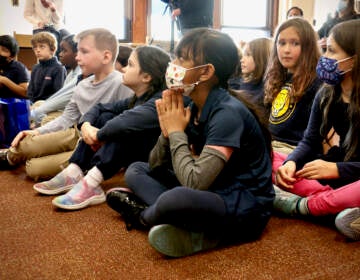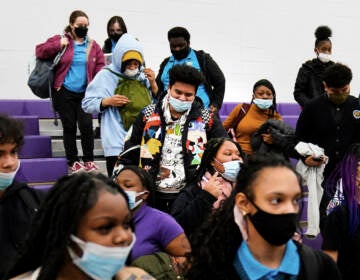Online-only college classes pose some distinct challenges for instructors
Teachers around the country had a short window to move to a different way of presenting course material. Internet access is just part of the struggle.

(TeroVesalainen/BigStock)
Anna Roberts teaches an entrepreneurship course at the Smeal College of Business at Penn State University.
She has around 25 students this semester, and the class is normally very active. She doesn’t lecture for more than 15 minutes at a time. She puts students in groups to stimulate their creative thinking using construction paper and Play-Doh.
None of that is possible now.
Colleges and universities are moving courses online, as students and teachers stay at home to help limit the spread of the coronavirus.
That means instructors like Roberts have to quickly rethink their plans for teaching students who are not meeting in person, and who might not even have stable internet access.
“My students did not sign up for an online course, so they have no obligation to have a computer, high-speed Wi-Fi, a printer, a scanner, a camera,” Roberts said. “I should not even survey them to ask if they have this.
“I don’t know if they went home, or if they’re with friends, or if they live in the dorms and they got kicked out of the dorms, or they’re staying in their apartment …”
Roberts said she does know that some of her students live in rural areas with limited internet access, and that others might be overseas in different time zones.
Right now, her plan is to offer her class the minimal amount of course materials, so her students can learn what they absolutely need to — even if they can only get to those materials on their phones. She said she designs her coursework and classes intentionally — and it will take more than a week to put the same level of thought into a fully online course.
Teachers around the country are struggling with similar issues. A group of university faculty created a Facebook group called Pandemic Pedagogy, to share advice and challenges around going to fully online courses in a very short time.
The group has more than 21,000 members, who have posted more than 2,000 times in the past 30 days.
“It is a mess, but it is a lovely mess, and it is absolutely indicative of what is happening in universities,” Roberts said.
Anne Trumbore taught English writing courses online for years through a Stanford University program, and now leads an online learning program at the Wharton School at the University of Pennsylvania.
As faculty move very quickly to all online courses, Trumbore said they will probably spend the first day or so just figuring out the technology. But later on, she hopes they can have time to think about how to best present their classes and engage students online.
For example, teachers can use Google Maps and have students drop pins so they all know where everyone else is, Trumbore said. Or teachers could make sure all their class materials can be downloaded, so students with limited internet access can wait until they go someplace with a better connection.
“I’m sad because I spent eight years helping professors put their courses online, but prior to that, I taught online with Stanford for many years, and it does take a little more time than a week,” Trumbore said. “I just hope that professors and instructional designers don’t just shut everything down and think that it’s less than, and a poor substitute, and think about the ways that it can actually be a different and still rich learning experience.”
WHYY is your source for fact-based, in-depth journalism and information. As a nonprofit organization, we rely on financial support from readers like you. Please give today.





